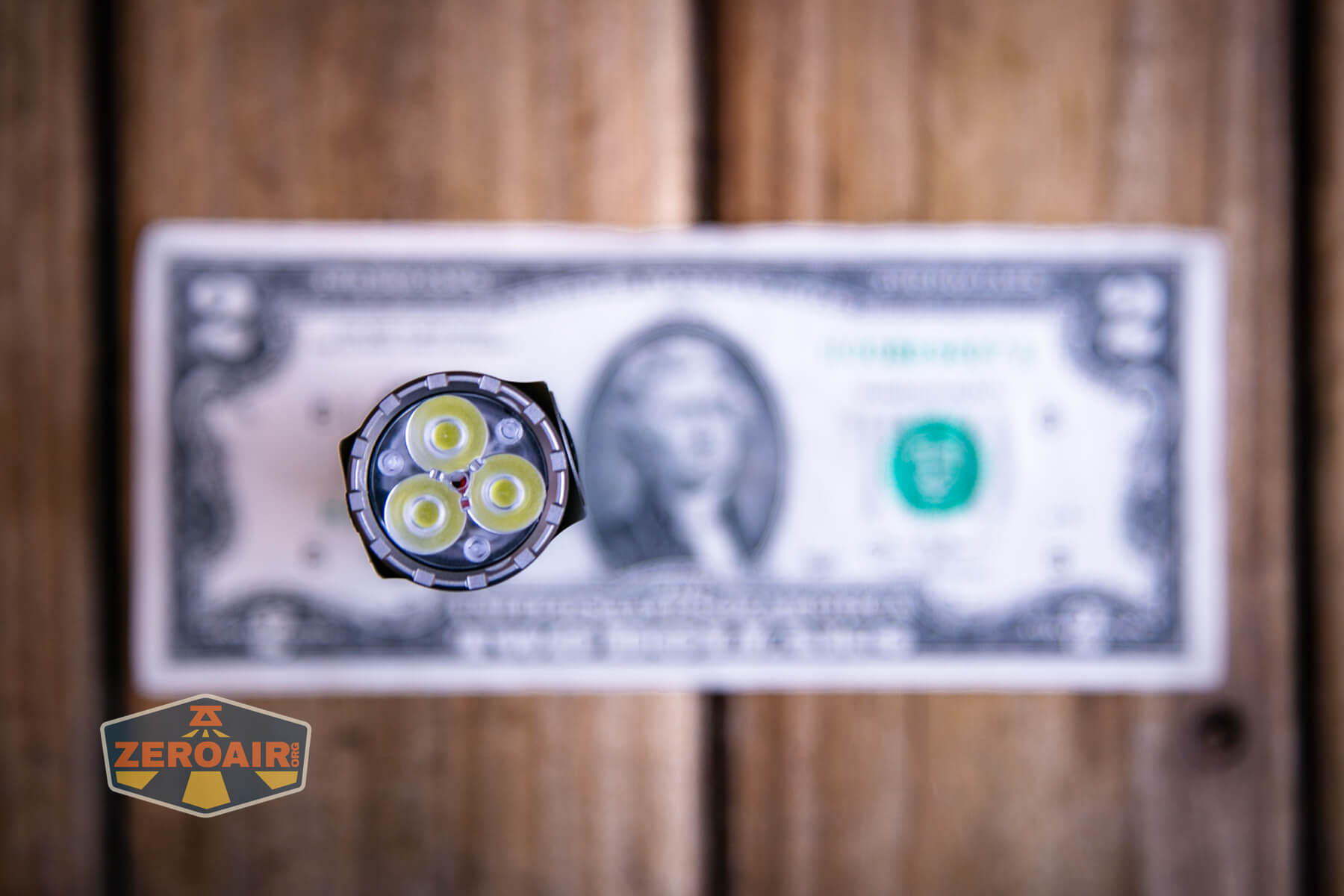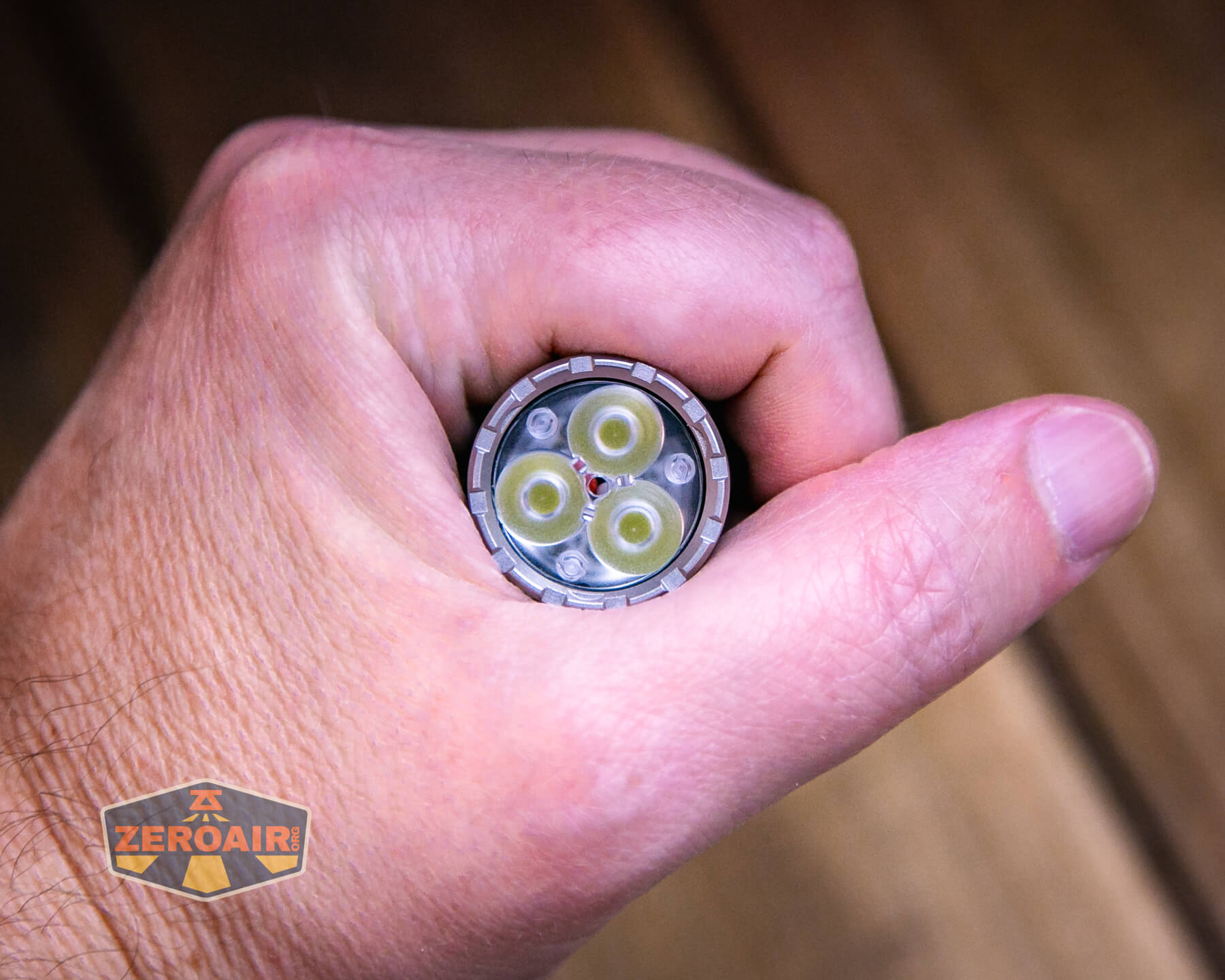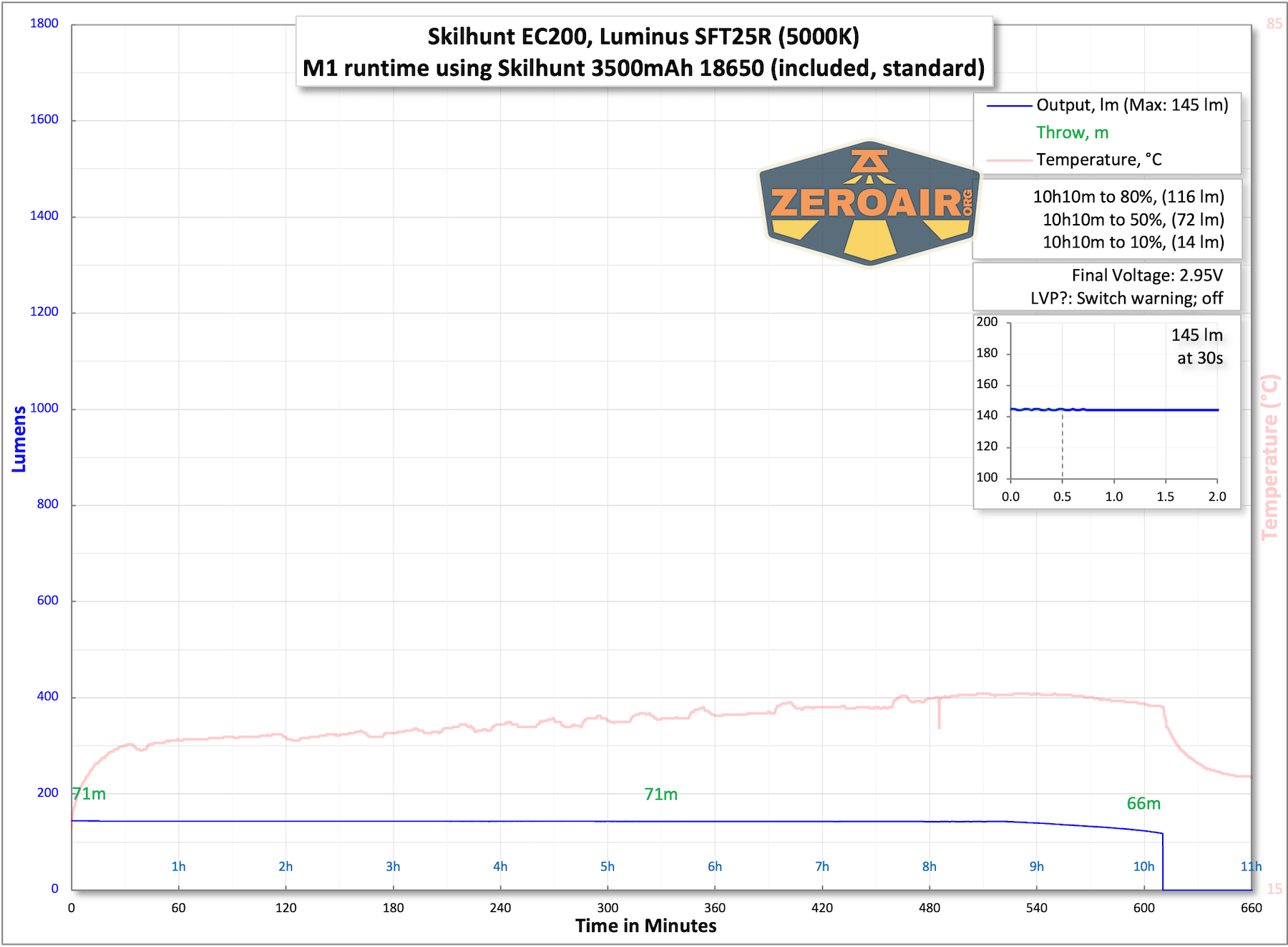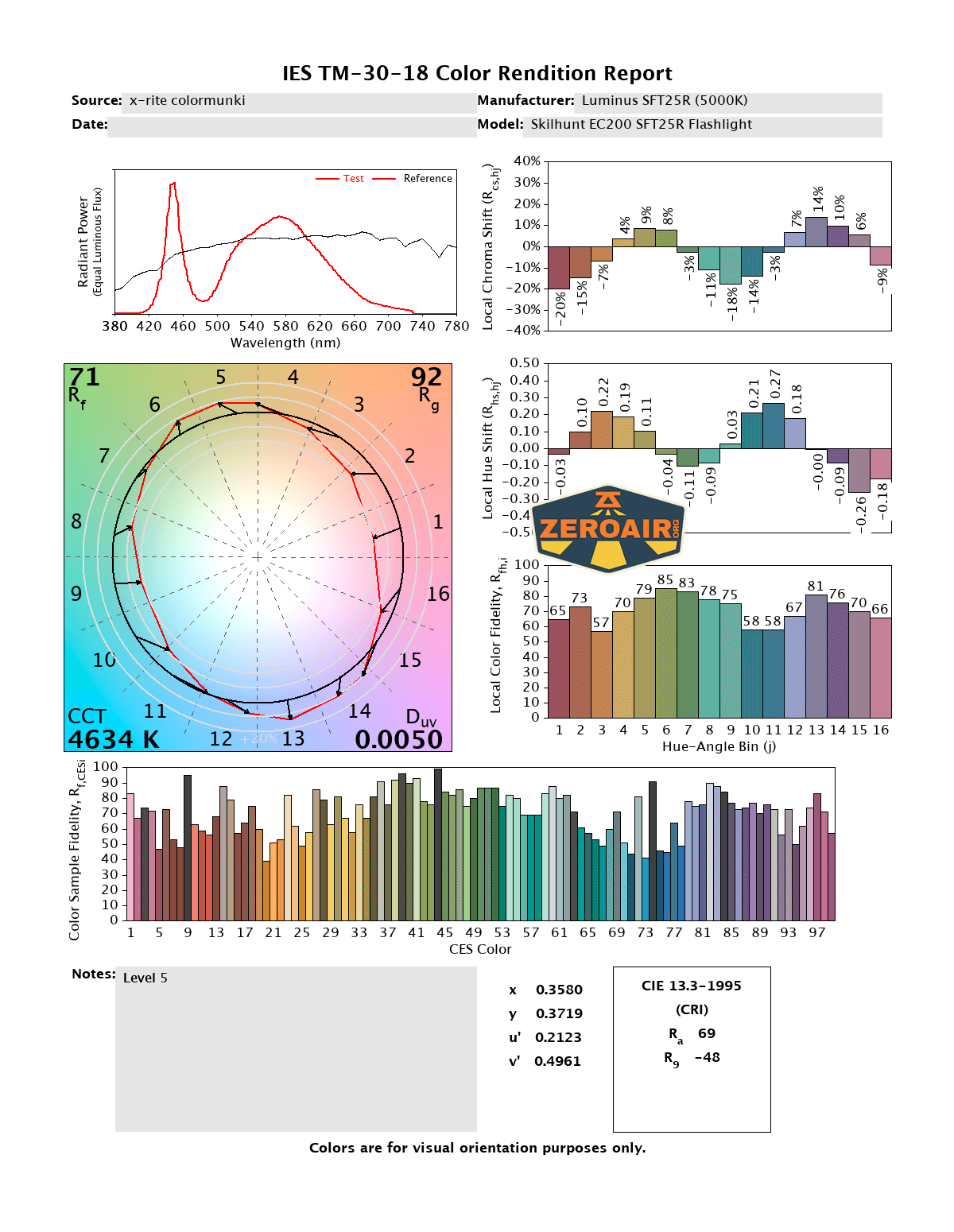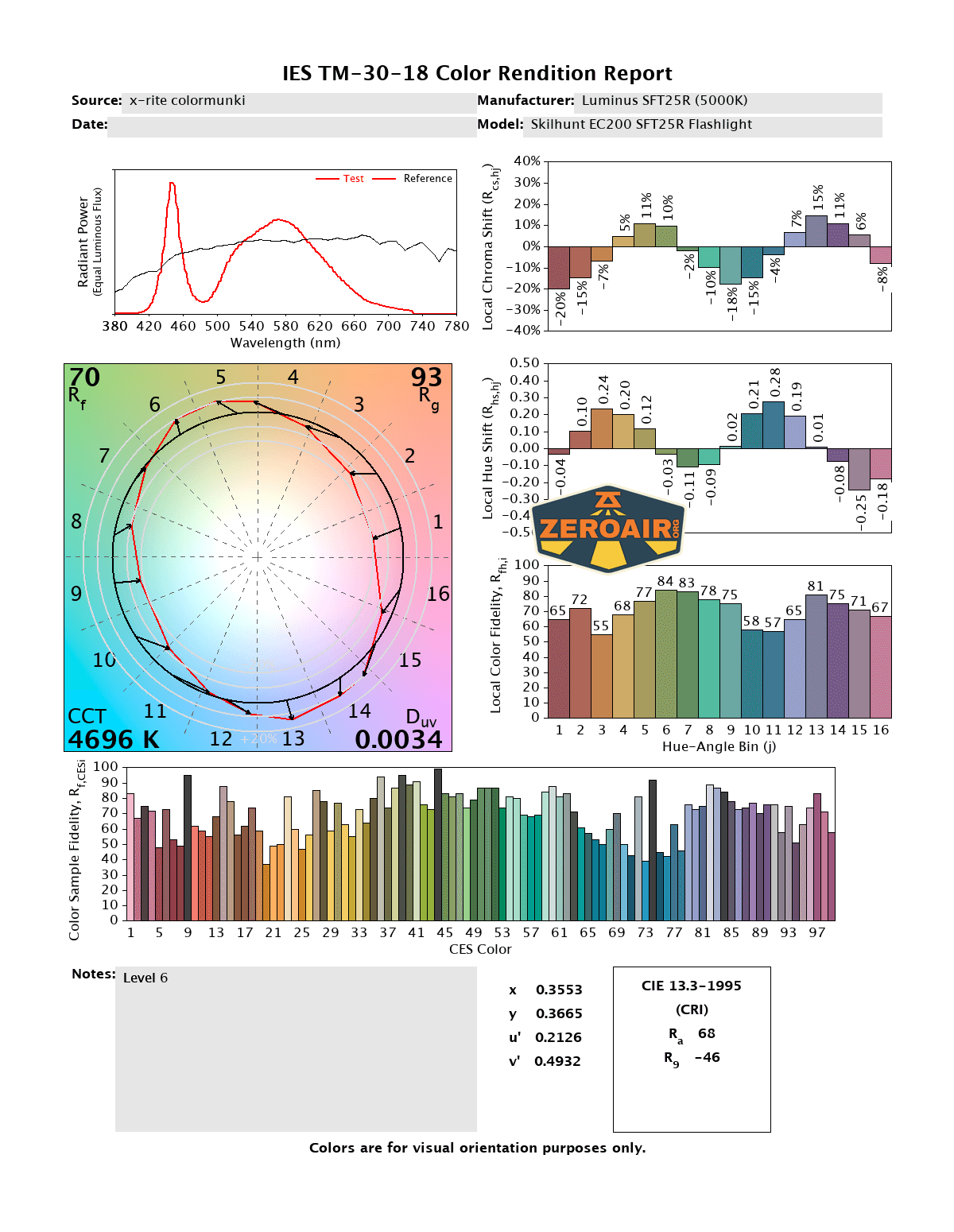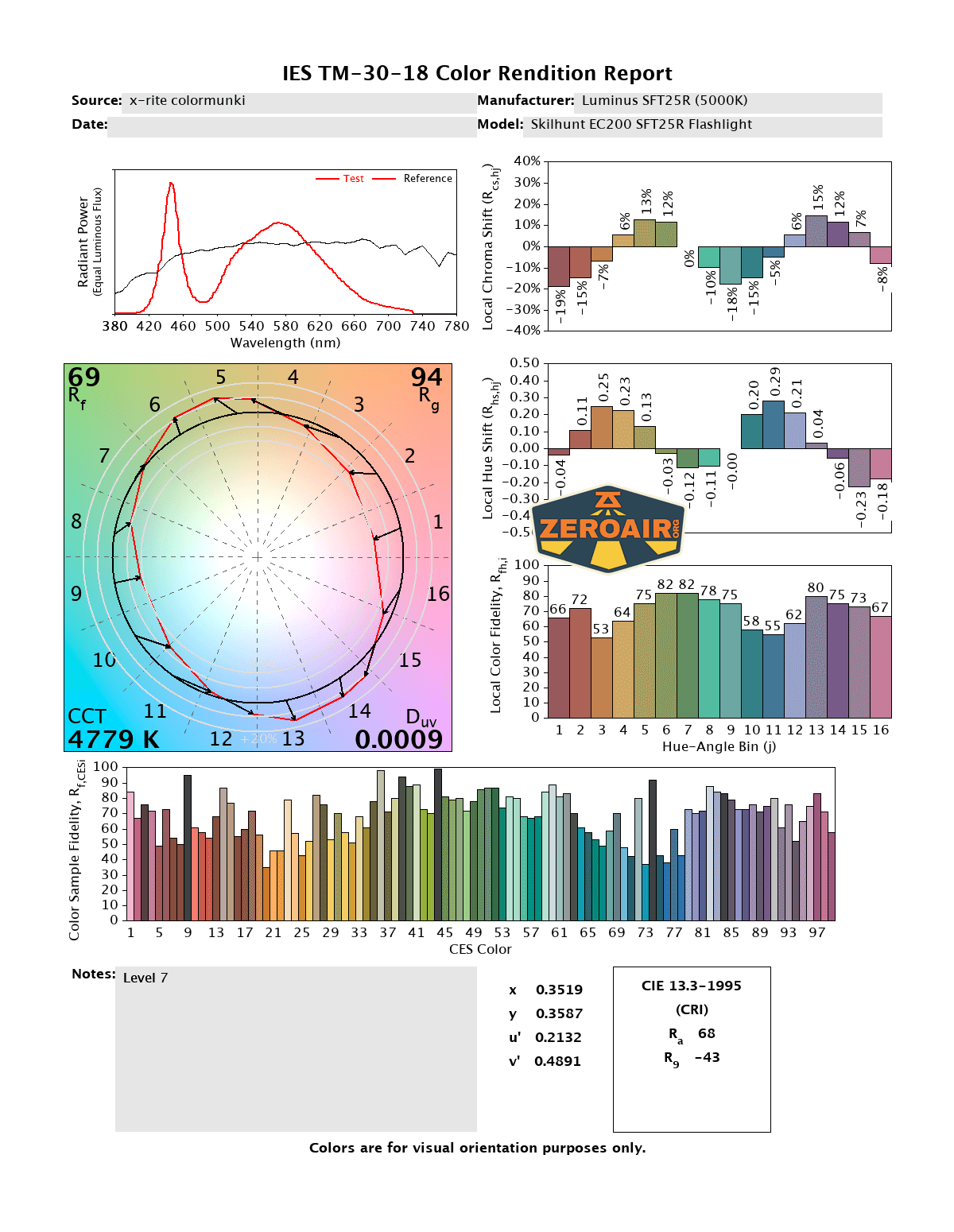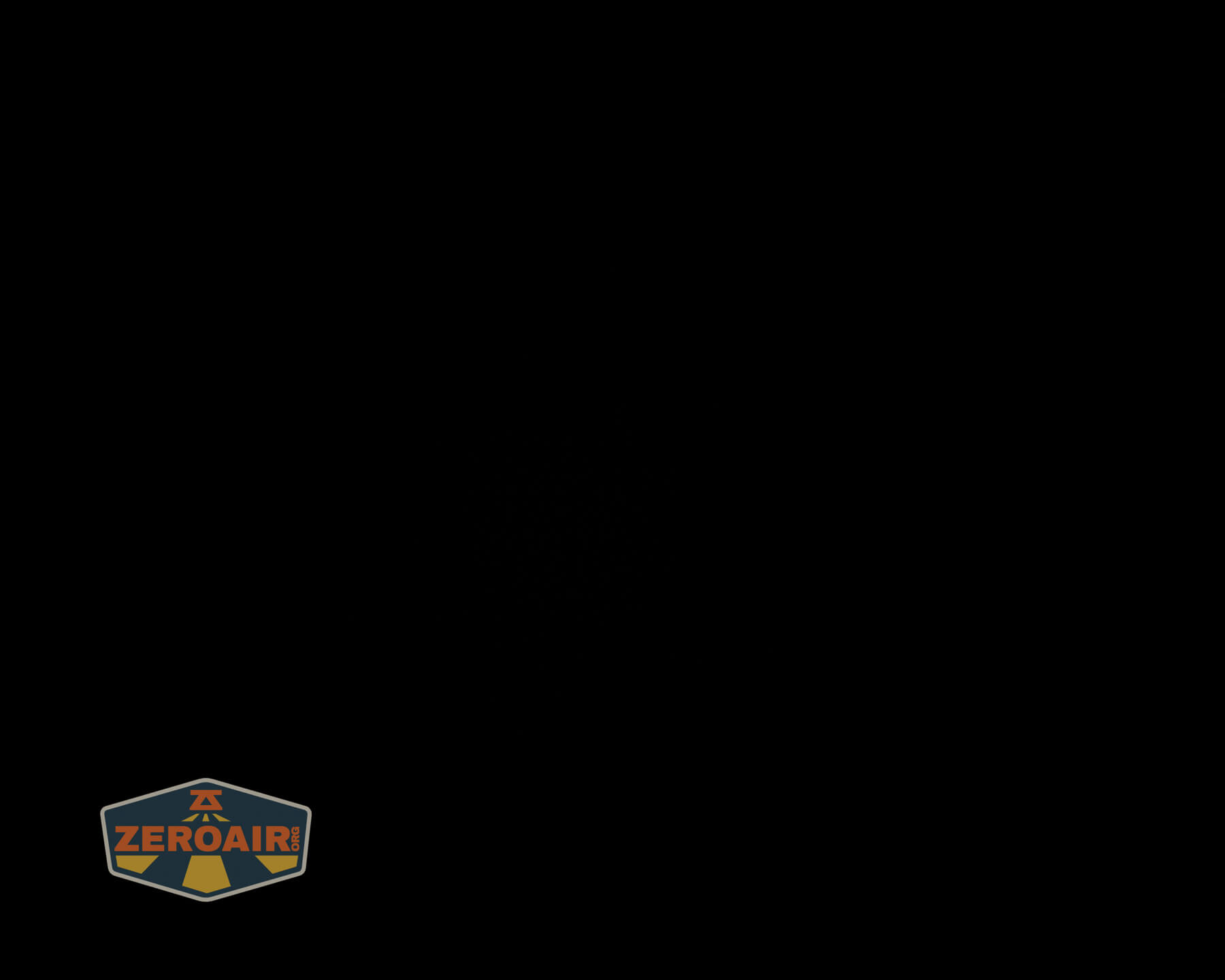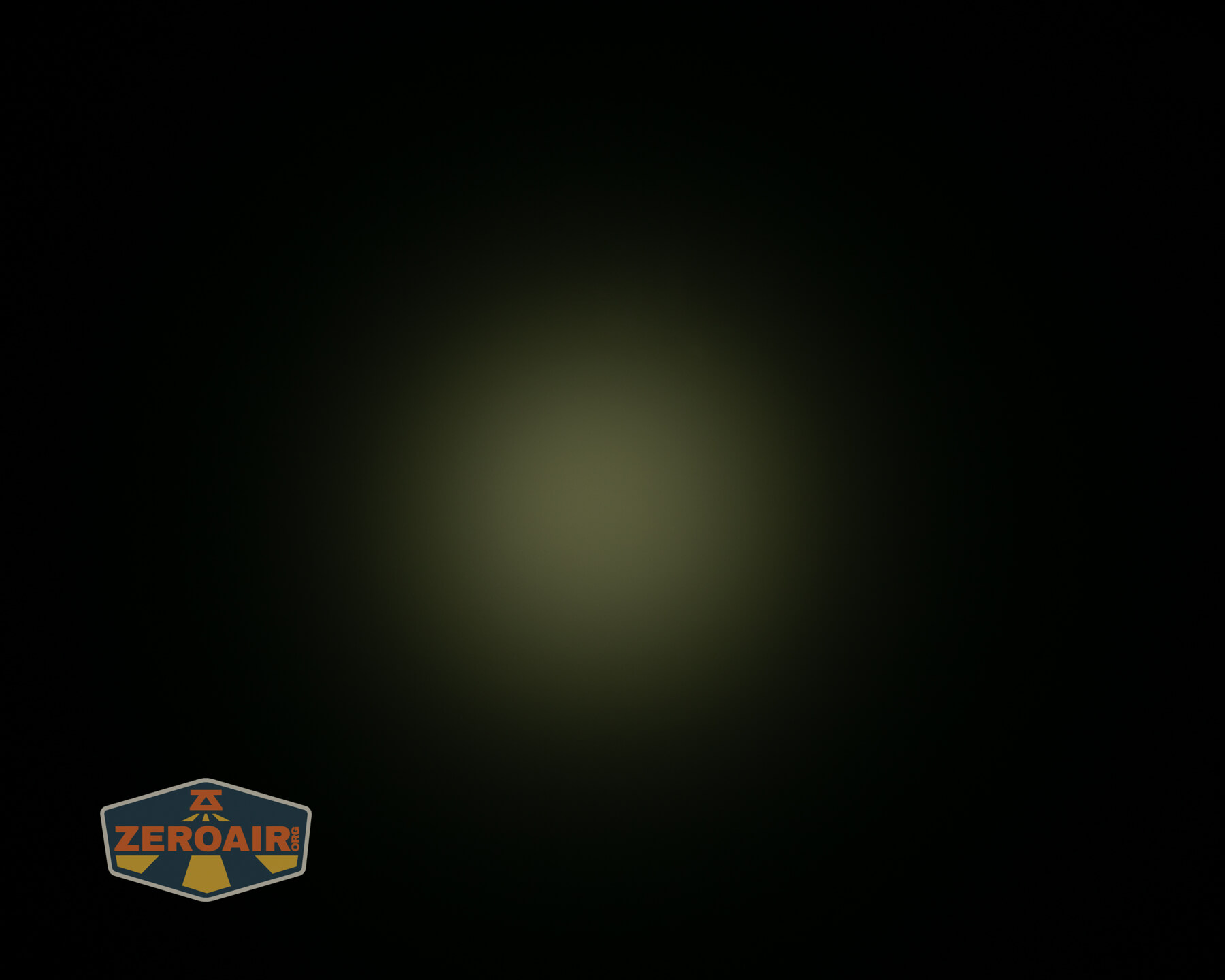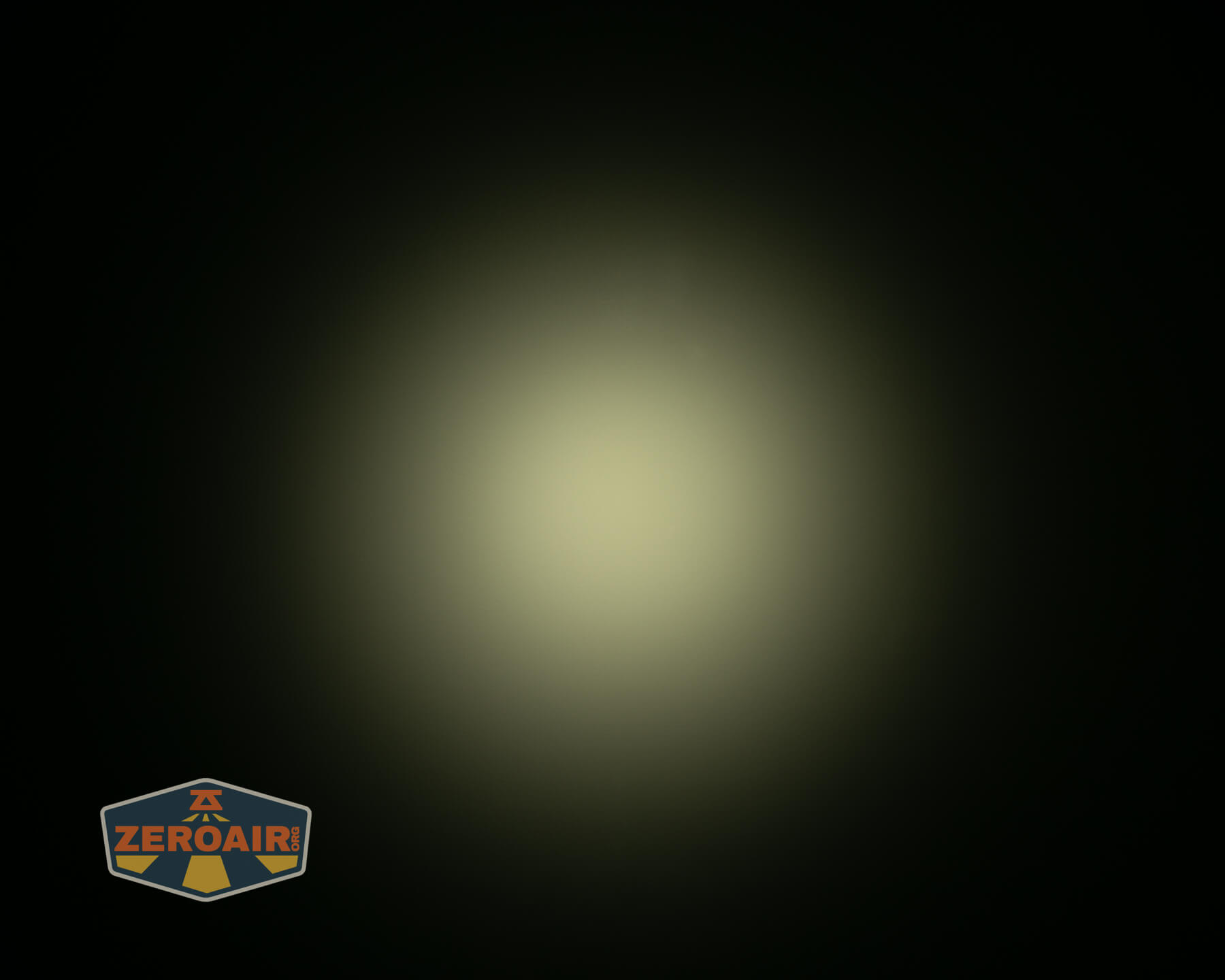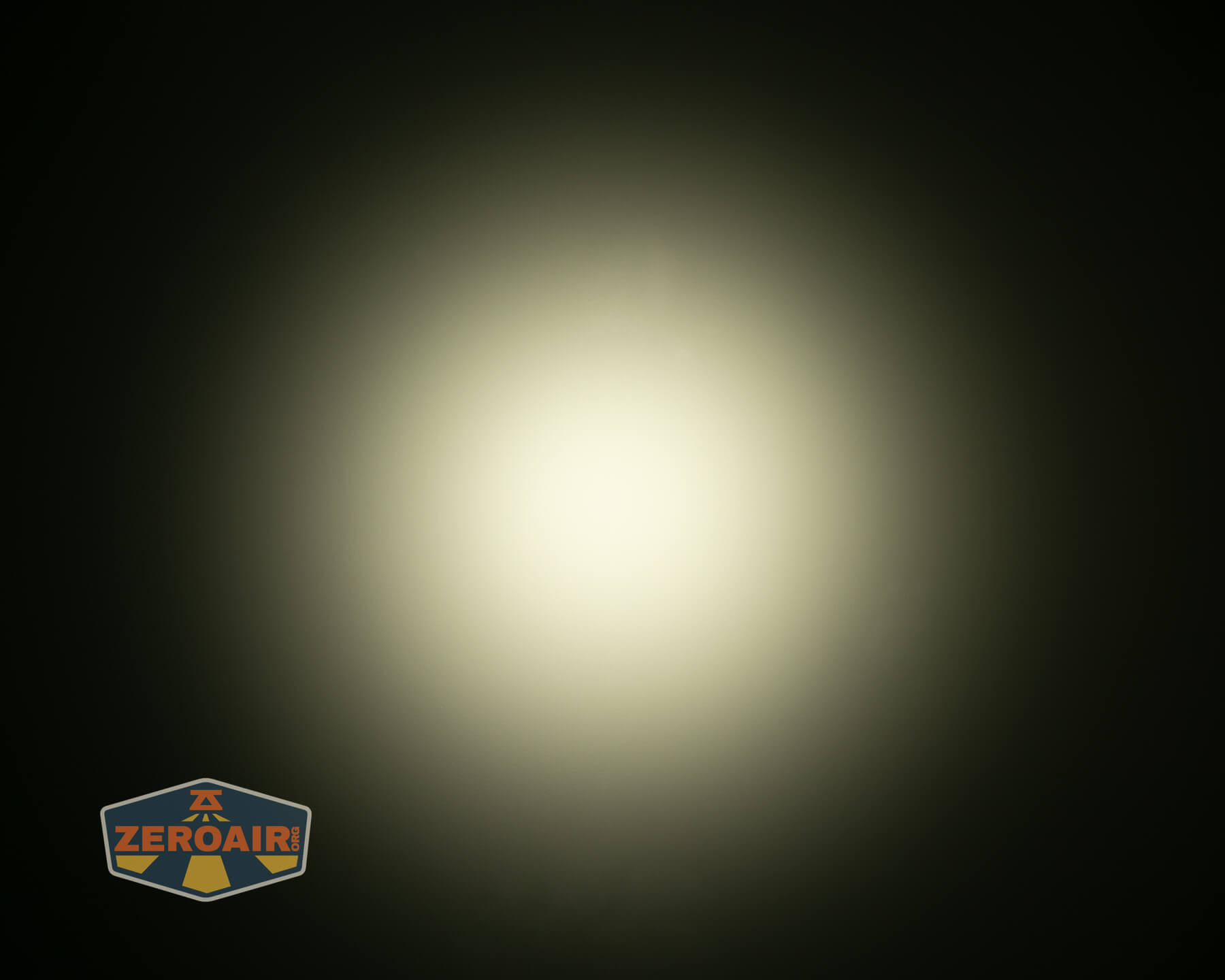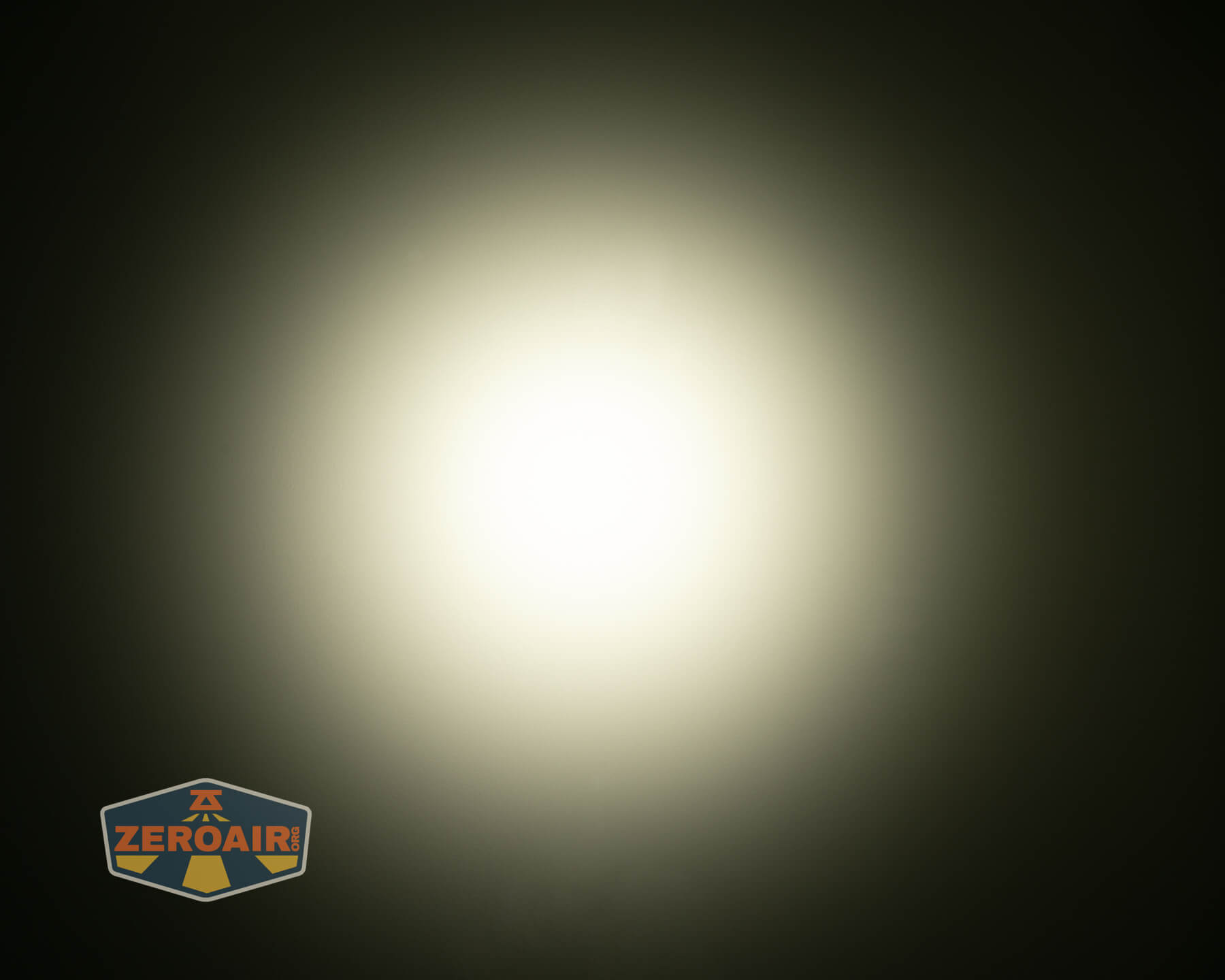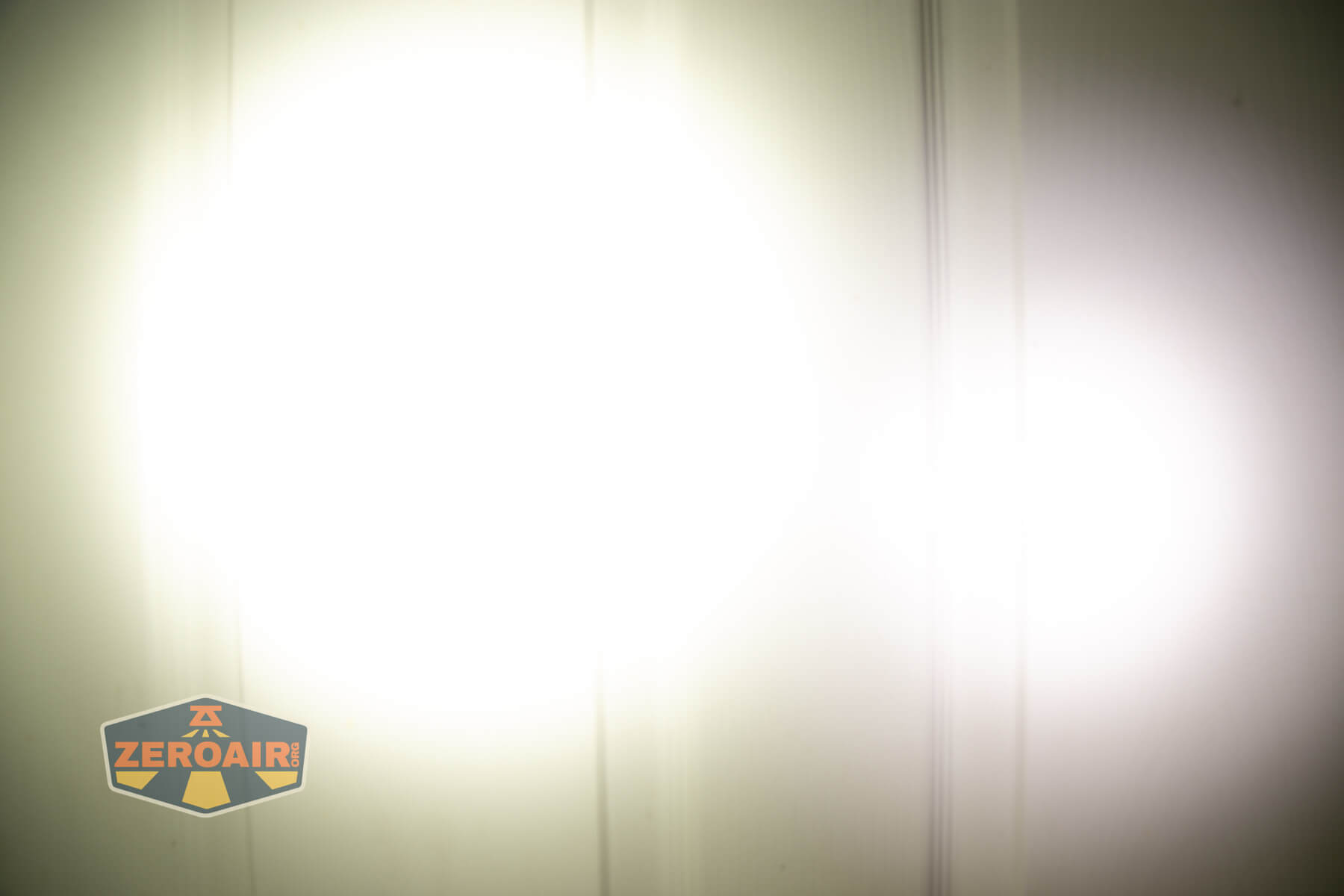Skilhunt EC200 Luminus SFT25R Flashlight Review
The Skilhunt EC200 Luminus SFT25R flashlight is a triple emitter, USB-C charging, 18650 flashlight. The new thing here is that it uses a Luminus SFT25R emitter!
Official Specs and Features
Here’s a referral link to the Skilhunt EC200 Luminus SFT25R flashlight product page.
Versions
There are so many versions of the Skilhunt EC200 flashlight! First, there are two body colors: black (seen here) and grey. Then they can be broken down into three categories. The “EC200” is a simple triple; Three of the same emitters. The “EC200S” has a secondary emitter, which takes the place of one of the emitters from the triple. There are two main emitters and one secondary. The secondary can be red (which is named “EC200S-Red”), UV (which is named “EC200S-UV), or some CCT of white (just “EC200S”). The new thing here is that the Skilhunt EC200 Luminus SFT25R flashlight adds the Luminus SFT25R option to the mix of emitters!
The third category adds “Mini” to the name and can be both the triple variety (EC200) and the “secondary” variety (EC200S).
Price
These range all the way from $55.90 to around $75.90. This model, as reviewed, sells for $63.90.
What’s Included
- Skilhunt EC200 Luminus SFT25R flashlight
- Skilhunt 3500mAh 18650
- Pocket clip
- Lanyard
- Charging cable
- Spare o-rings (2)
- Magnet delete
- Manual
Package and Manual
Build Quality and Disassembly
Skilhunt’s build quality for the EC200 Luminus SFT25R flashlight is great. That’s no surprise. I will note that the price of most current Skilhunt lights seems to continue to creep upward, but will note at the same time that the quality is commensurate with the price.
One huge improvement of the EC200 is USB-C charging. I’ll cover that more thoroughly below, but note that there’s no real burden to this change – the light is definitely not too big because of this charging port.
One thing to note is that the EC200, EC200S, EC200S, and EC200S-UV all have the same markings. They are all labeled “EC200.” Of course, you can look at the emitters and tell immediately if you have the S (and which S you have).
The threads here are very smooth.
Size and Comps
102mm x 25mm x 22.2mm and 48.5g (without battery)
If the flashlight can headstand, I’ll show it here. If it can tailstand, I’ll also show that here!
Here’s the test light with the venerable Convoy S2+. The version below is a custom laser-engraved Convoy S2+ host by GadgetConnections.com. I did a full post on an engraved orange host right here! Or go straight to GadgetConnections.com to buy your Convoy S2+ now!
Also in the photo above, my Standard Reference Material (SRM) flashlight is the Hanko Machine Works Trident, an 18350 light. While I have not reviewed or tested the Gunner Grip version seen here, I have tested a Hanko Machine Works Trident Total Tesseract in brass. I love the Trident, and it’s a striking contrast to the inexpensive Convoy S2+, another great SRM.
Retention and Carry
A pocket clip is included with the Skilhunt EC200 Luminus SFT25R flashlight. It ships unattached and is a friction-fit clip.
Despite offering two-way usage, the clip can go on the head or the tail. Very versatile! There are also lanyard holes on both ends of the clip.
Next up is the lanyard, which attaches through a hole in the tailcap (or through the pocket clip holes, if you wish.)
Here’s that tailcap hole. The clip includes a little wire for making installation easier.
There’s a magnet in the tailcap, too. It’s plenty strong for holding the light. But if you don’t want that, then you can remove the magnet and place the rubber “blank” where the magnet goes. That’ll keep your spring from being loose.
Finally, there’s a nylon mesh pouch. Skilhunt always ships these separately, but I think you’ll get one with your order, too.
Power and Runtime
The Skilhunt EC200 Luminus SFT25R flashlight runs on a single lithium-ion cell. It’s sized for an 18650, and an appropriate 3500mAh cell is included (technically it’s optional).
The 18650 fits into the EC200 with the positive terminal toward the head, as seen below. Unlike some other 18650 Skilhunts, this one has a max voltage of 4.2V, so no doubling cells in here!
Here are a few runtime tests. I wouldn’t say there’s anything super surprising here. Output is very stable once a stepdown has happened, and low voltage protection is observed. There’s also a low voltage warning from the indicating e-switch.
The temperature lines in these charts are included as general context, not precise measurements. The values represent the range (min to max) during testing, but should not be taken as exact readings. Temperature sensors are attached however feasible and not always on the bezel or hottest spot (assuming that can even be clearly defined). Even with ideal placement, too many variables affect temperature to definitively state a specific max value.
Charging
I’ve said it over and over already, but the Skilhunt EC200 Luminus SFT25R flashlight offers USB-C charging! Congratulations to Skilhunt for making this move on an 18650 light. I liked their old proprietary magnetic charging just fine, but now that I see USB-C on here, I like this so much better! And without a real sacrifice to size, too! It’s fantastic. Of course, they’ve had this before (and for a while!) on a bigger light like the EC300 (which I also really like!)
The charge port cover is a press-in silicone bit and seems very sturdy when in place. It’s also fairly sleek when closed, so that it doesn’t open needlessly.
Skilhunt includes a USB-A to USB-C cable for charging.
Below are tests for C to C and A to C charging. Both work just fine.
While charging, the switch is red. When charging is complete, the switch is steady blue. If something is wrong with charging, the switch blinks red.
Modes and Currents
| Mode | Mode Claimed Output (lm) | Claimed Runtime | Measured Lumens | Tailcap Amps |
|---|---|---|---|---|
| T1 | 2250-645-220 | 1m+180m+30m | 1748 (0s) 1632 (30s) |
5.61 |
| T2 | 1180-645-220 | 3m+180m+30m | 825 (0s) 819 (30s) |
1.88 |
| H1 | 645-220 | 180m+30m | 438 | 0.89 |
| M1 | 220 | 10h | 145 | 0.28 |
| M2 | 65 | 30h | 44 | 109mA |
| L1 | 6 | 100h | 4 | 41mA |
| L1 | 1 | – | 0.41 | 6.5mA |
Pulse Width Modulation
None of the modes use PWM! Yay!
Click here to see a “baseline” – a chart with almost no light hitting the sensor.
Then there’s the Ultrafire WF-602C flashlight, which has some of the worst PWM I’ve seen. It’s so bad that I used a post about it to explain PWM! Here are multiple timescales (10ms, 5ms, 2ms, 1ms, 0.5ms, 0.2ms) to make comparing this “worst” PWM light to the test light easier. That post also explains why I didn’t test the WF-602C at the usual 50us scale.
User Interface and Operation
The switch on this Skilhunt EC200 Luminus SFT25R flashlight should be very familiar. It’s very much like what Skilhunt has used for a long while (at least back to 2022 on the EC300, for example. The light is controlled by a single e-switch. This switch has a backlight function and can light in red or blue. While the switch has a transparent center, it has an interesting design pattern printed (?) in the center. It’s another thing to like about the EC200! It’s not a functional improvement, but a nice touch.
The switch is just barely proud, and the action is very good.
Here’s the switch lighting in red.
Particularly on the “base model” EC200 (the one with no secondary emitters), the user interface is familiar and simple enough. Anyway, I love the Skilhunt user interface, even if it can be said to be complex. But this one is great!
Here’s a user interface table!
| State | Action | Result |
|---|---|---|
| Off | Hold | Low (Memory between L1 and L2) |
| L1 or L2 | Hold | Iterate between L1 and L2 |
| Off | Click 4x | Lockout (Three blinks of main emitters to confirm) |
| Lockout | Click 4x | Unlock to Low group (memory, can be L1/ L2) |
| Lockout | Click 2x | Iterate lockout indicator^ |
| Lockout | Hold | Momentary Output (Appears to be approximately L1) |
| L1/L2 | Click | Off |
| Off | Click | On in “Main Group” (Mode memory M2/M1/H) |
| Main Group | Hold | Mode advance (M2 > M1 > H) |
| Main Group | Click | Off |
| Main Group, Off, or Low group | Click 2x | Turbo Group (T1/T2) |
| T1/T2 | Hold | Iterate between T1 (higher) and T2 (lower) output |
| T1/T2 | Click | Off |
| T1/T2 | Click 2x | Main Group (memory output) |
| Main Group, Off, or Low group | Click 3x | Strobe Group (with memory) |
| Strobe Group | Click 3x | Previous Group (T1/T2 or M2/M1/H, depending on how you accessed Strobe Group)^^ |
| Strobe Group | Click 2x^^^ | Strobe Advance (S1 > S2 > S3)† |
| Strobe Group | Hold | No result |
^ The lockout indicator blinks a red switch every 2-3 seconds.
^^ Aside from just general mode memory (which you know I don’t like), this seems to me to be the only place where you may need to immediately remember what mode you were in so you have the experience you expect. However, the difference is getting the two highest white outputs or the three main white outputs – it won’t be that dramatic even if you don’t remember. Also note that if you accessed the strobe group from off, triple-clicking will not return to off. For continuity, it should! In fact, if you access strobe from an off state, a triple-click sends the light to the Main group!
^^^ Seems like the strobe group is the only group that isn’t advanced by a hold. Since there’s no hold anywhere else into or out of Strobe, I am not sure why that user interface continuity wasn’t maintained here.
† Strobes are like this:
S1: Disorienting strobe (turbo, ish)
S2: SOS (main white, some mid-High output)
S3: Simple blinking
It’s not really covered in the user interface table, but the switch does indicate the power level. It does this for around 5 seconds after you turn the light on. The indicators are as follows:
Blue steady: 100-80%
Blue blinking: 80-50%
Red steady: 50-20%
Red blinking: 20-0%
I do think this version lacks an improvement that was made along the way. SOME versions of the EC200 can be “click+hold” from the L modes, directly to the lowest in the main group. On this version, click+hold from either L mode goes to main group mode memory. That’s a massive bummer.
LED and Beam
This Skilhunt EC200 Luminus SFT25R flashlight has three Luminus SFT25R emitters. It’s a “triple” and so for me, slots right into that “BOSS” category. I love it! It adds USB-C charging to that slot for me, though, which is a huge bonus!
The bezel screws in over what appears to be a standard triple optic. This looks like a narrow optic – if you wanted more flood, you could likely replace this optic with one of two others that offer more flood. (I don’t want that – I very strongly prefer this narrow optic!) This stainless bezel also has teeth (or “shape”) that allow light to escape when headstanding.
LED Color Report (CRI and CCT)
The manual refers to this emitter option as “Cool White”, but does state that it’s 5000K. I have a suspicion that the manual and product photo aren’t updated to include this 5000K SFT25R (because it is new). So I’m not sure what the actual output expectations are, but we do know it’s 5000K, not “CW.” That said, it measures a good bit warmer, at around 4700K, and is low CRI.
CCT (Correlated Color Temperature) refers to the measurement of the color appearance of light, expressed in Kelvins (K), which indicates whether the light is warm (yellowish) or cool (bluish). A lower CCT (below 3000K) is considered warm light, while a higher CCT (above 5000K) gives cooler, bluish light.
CRI (Color Rendering Index) is a measure of how accurately a light source renders colors in comparison to natural sunlight. Scored on a scale from 0 to 100, higher CRI values indicate that colors appear more true to life and vibrant, similar to how they would look under the sun.
Beamshots
These beamshots always have the following settings: f8, ISO100, 0.3s shutter, and manual 5000K exposure. These photos are taken at floor level, and the beam hits the ceiling around 9 feet away.
Tint vs BLF-348 (KillzoneFlashlights.com 219b version) (affiliate link)
I keep the test flashlight on the left and the BLF-348 reference flashlight on the right. These photos are taken around 18 inches from the door.
I compare everything to the KillzoneFlashlights.com 219b BLF-348 because it’s inexpensive and has the best tint!
Summary and Conclusion
If it’s not clear from the text above, I’m practically gushing about this light. I love the “simple” triple version. There are other options if something else suits your needs, but the body is the same. That’s also fantastic. USB-C charging works great. The user interface is great. CRI and CCT are possible downsides but they do have the benefit of better throw and output (so that’s a win, if that’s what you’re looking for). Everything here is great.
The Big Table
| Skilhunt EC200 SFT25R flashlight | |
|---|---|
| Emitter: | Luminus SFT-25R (5000K) |
| Price in USD at publication time: | $63.90 |
| Cell: | 1×18650 |
| Runtime Graphs | |
| LVP? | Yes |
| Switch Type: | E-switch |
| Quiescent Current (mA): | ? |
| On-Board Charging? | Yes |
| Charge Port Type: | USB-C |
| Charge Graph | |
| Power off Charge Port | “with cell: all modes without cell and/or tailcap: all modes except T1” |
| Claimed Lumens (lm) | 2250 |
| Measured Lumens (at 30s) | 1632 (72.5% of claim)^ |
| Candela per Lumen | 8.8 |
| Claimed Throw (m) | 175 |
| Candela (Calculated) in cd (at 30s) | 567lux @ 4.754m = 12814cd |
| Throw (Calculated) (m) | 226.4 (129.4% of claim)^ |
| Claimed CCT | 5000 |
| Measured CCT Range (K) | 4700-4800 Kelvin |
| Item provided for review by: | Skilhunt |
| All my Skilhunt reviews! | |
^ Measurement disclaimer: Testing flashlights is my hobby. I use hobbyist-level equipment for testing, including some I made myself. Try not to get buried in the details of manufacturer specifications versus measurements recorded here; A certain amount of difference (say, 10 or 15%) is perfectly reasonable.
What I like
- Size
- USB-C Charging (particularly for the size)
- Good emitter options
- Excellent user interface
- Available as a “mini” (which makes a great 18350/18650 combo)
- Very good “lowest” output
What I don’t like
- The cell adds a surprising cost to the package
- From either L mode, click+hold goes to main mode memory (not lowest main mode, as on some versions.)
Notes
- This content originally appeared at zeroair.org. Please visit there for the best experience!
- Please use my Amazon.com referral link to help support zeroair.org!
- Please support me on Patreon! I deeply appreciate your support!














